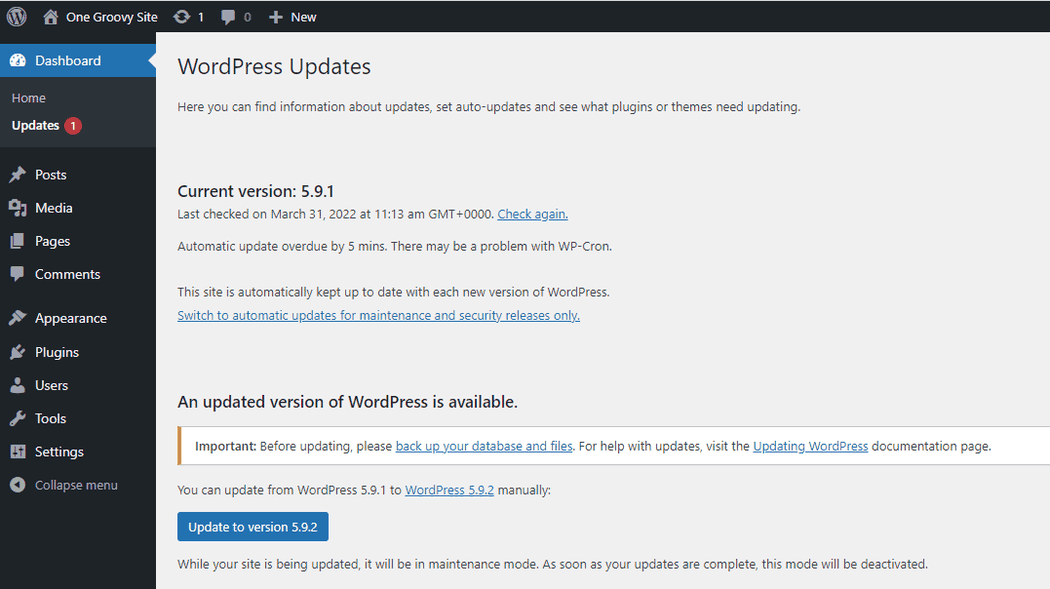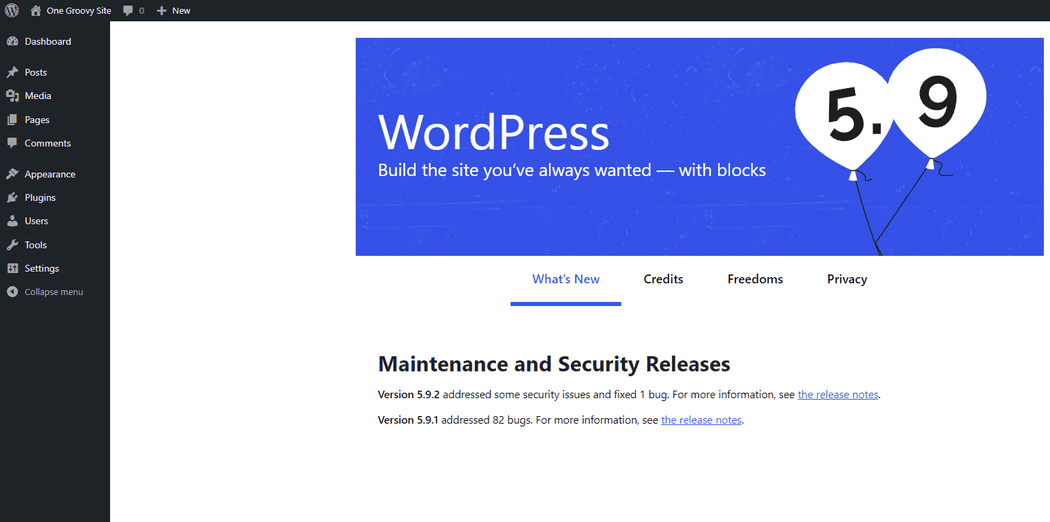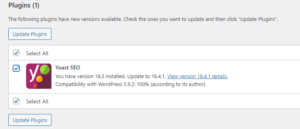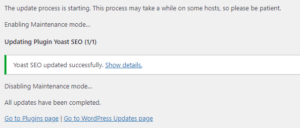WordPress has a host of very cool automated features at its disposal, like auto-posting, security scanning, site health checks, and auto updates. So why would you want to interfere with automation and start manually updating WordPress for clients?
Well, sometimes automation can go sideways and cause more harm than good.
One such instance is the auto-update feature. You can set WordPress to automagically update its core files, and you can even set it to update plugins and themes, too. That may seem fine until there is a conflict with an update — and now the site is down.
That won’t sit well with your client, so it’s highly recommended to keep an eye on updates as you run them. If you’re managing WordPress sites for a stable of clients, you can use The Hub by GoDaddy Pro to run updates in bulk. You’ll be able to monitor these updates as they complete and easily click into WP admin if it’s necessary.
Manually updating WordPress core files
At the heart of WordPress are the core files, like the wp-config.php, index.php, and functions.php, to name just a few. Anyone can feasibly download these core files and work to exploit them for vulnerabilities.
Thus, these files need to be updated regularly to patch security holes.
Updates also address new features as well. It is always best practice to manually perform a core file update for the primary fact that if something goes wrong, you are there and able to revert to the previous version of WordPress quickly.
If left unchecked and the site does go down, and you aren’t there to fix it, a client’s online presence could be missing for an untold period of time. Simply being there to press the update button in the dashboard of the site could save you many future woes.
Upon logging into WordPress, select Updates from the top left of the primary dashboard menu. This will take you to the Updates page. Here you will be able to see all the updates the site requires.

Covering your bases with a backup
After reviewing the necessary updates, make sure the site is backed up. It is always best practice to fully back up the site before running any updates. That way you have something to revert to, in the event something goes wrong.
If you’re using Managed WordPress from GoDaddy, the site is backed up each day.
If you’re not using Managed WordPress, you should have a backup plan in place that stores redundancies (backups) of a site. Once you have confirmed that you have a recent backup, you’ll want to select the Update to version x.x.x button.
The update can take a couple minutes to complete on larger sites. But once it’s complete, you’ll see a screen like this one.

On rare instances, the update can fail. That is why it is crucial that you have a backup in place and ready to restore. There are many reasons for a failed update, but usually it is due to either a hosting or server setting, PHP version issue, or plugin/theme incompatibility.
One point to remember, too, is that when WordPress is updating core files, plugins, or themes the site will automatically be placed in maintenance mode till the update is finished.
Manually updating WordPress plugins & themes
To update plugins, visit the Updates page again. Scroll down to the plugins section and there you will see one or more plugins that need attention.
Best practice in mind here: update one plugin at a time.
The reasoning behind this is if you update them all at once, and one of the plugins has an issue, you’ll have a lot of troubleshooting on your hands to find out which plugin failed to update successfully.
Updating one at a time allows you to spot which plugin, if any, failed to update. You can simply disable that plugin and either come back to it later or replace said plugin with another that is more compatible with other plugins, theme, or core files.
Plugin troubleshooting is outside of the scope of this article, but you can hit your favorite search engine to find the solutions. When updating a plugin, you would simply select the check box to the left of the plugin and, just above the plugins, select Update Plugins.

Plugins can take a few minutes to update, at times. So be patient. Good things come to those who wait. Once the plugin has completed its update, you’ll be redirected to a “success” screen. The maintenance mode will be automagically deactivated, and the site will be accessible again.

A point to remember here is that when you’re updating core files, plugins, or themes, you simply need to wait till the update is finished. If you navigate away from the update page, you will interrupt the update and you will have to manually delete the .maintenance file via either FTP or File Manager.
Otherwise, the site will be stuck in maintenance mode.
Updating a theme follows the same procedures as updating plugins. Select the theme to update, select the Update Themes button, and wait for it to complete.
Closing thoughts on manually updating WordPress
In closing, be sure to follow best practices and always backup files and database before performing any updates. Always update one thing at a time. And finally, be patient and allow WordPress to complete your requested task. You’ll be glad you did. Manual updates have been a part of my personal routine for over a decade now, and my sites are better for it.